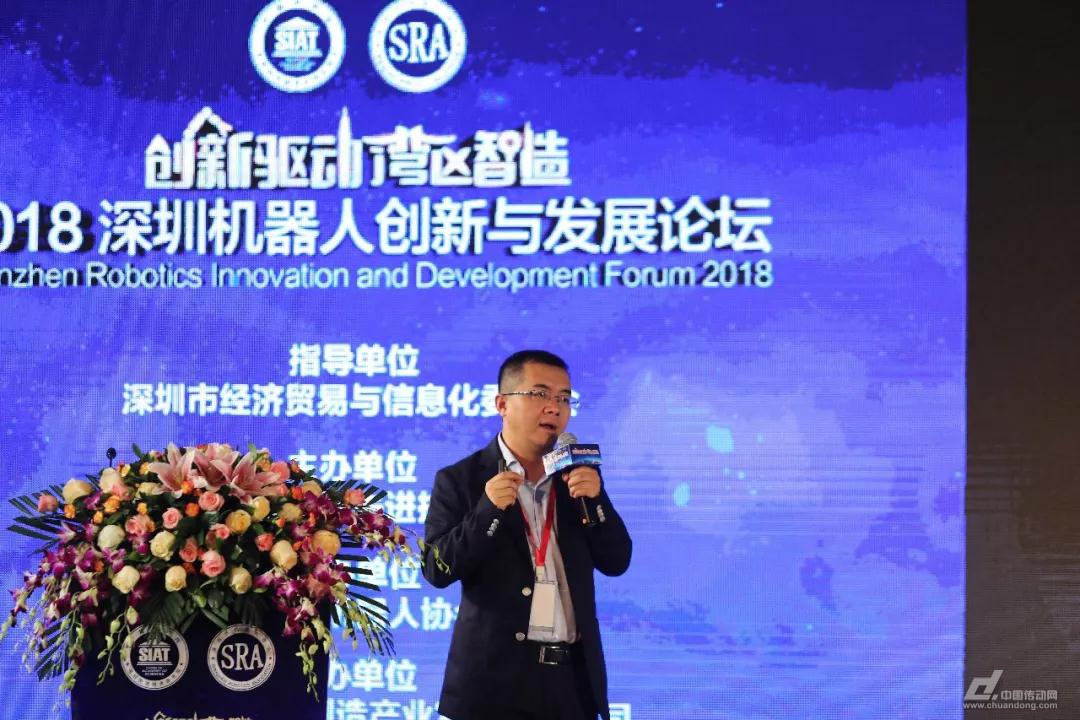Intelligent AI, intellectual enjoy the future

Ke Dafei, Vice President Yu Jidong
In early 2018, the Shenzhen Robot Innovation and Development Forum took place at the Venice Ruidu Hotel in Shenzhen. The event focused on the theme of “Innovation Drives the Wisdom of the Bay Area,†bringing together industry leaders, experts, and scholars to discuss the future of robotics and artificial intelligence. At the forum, Yu Jidong, Vice President of HKUST, delivered a speech titled “Smart AI, Smart Future.†Below is the full text of his address.
From 2015 to 2018, the robot industry has experienced rapid growth, with data showing significant progress. Over the next three to five years, the industry is expected to reach a scale of over one trillion dollars. Intelligent robots are key carriers for artificial intelligence, as they represent the physical embodiment of AI in real-world applications. While humans naturally associate AI with humanoid robots, the true potential lies in the integration of motion, perception, computation, and cognitive intelligence. Although current robots excel in cognition, cognitive intelligence is advancing rapidly and is expected to make groundbreaking achievements soon.
There are two main directions in AI development. One focuses on combining deep neural networks (DNN), big data, and expert knowledge to create practical AI solutions across various industries. The other aims to simulate the human brain, enabling AI to think and decide like humans. HKUST has been actively exploring both paths, ensuring a balanced approach to innovation.
Artificial intelligence follows a three-tier system: basic algorithms, technical systems, and application systems. Over the past decade, HKUST has built a strong foundation in algorithm development, technical systems, and real-world applications. In recent years, the university has achieved notable success, including winning first place in the world’s most prestigious far-field voice recognition competition last year.
Shenzhen, a hub for robotics, sees nearly 90% of manufacturers using HKUST's far-field recognition technology. Last year, the six-microphone array solution was launched, now widely adopted by partners. HKUST has also achieved top rankings in speech synthesis, recognition, image recognition, and autonomous driving technologies. Current AI can already match or even surpass human speech capabilities, opening up new possibilities for natural interaction.
While HKUST has made great strides in cognitive AI, the field still lags behind human capabilities. Cognitive technology remains challenging but is a critical area for breakthroughs. With ongoing research and technological advancements, it is only a matter of time before AI achieves self-learning and continuous improvement.
HKUST has demonstrated impressive results in specific cognitive tasks. For example, an AI system developed by the university performed exceptionally well in the National Medical Licensing Examination, ranking among the top 100. Additionally, HKUST has become a leading open innovation platform for AI, offering cutting-edge technology to partners since 2010.
By 2017, the open platform had over 500,000 partners, many of whom were based in Shenzhen, a hotspot for innovation. Active terminals reached 1.5 billion, with 4 billion daily voice interactions. This highlights the growing reliance on voice-based AI in everyday life.
The HKUST Fly Input method, for instance, saw a significant increase in usage, from 7 times per person in 2016 to 15.2 times in 2017. With robotic devices, daily interactions have risen to 53 times, proving that robots are becoming essential AI platforms. As 90% of human information comes through vision and 80% is expressed through speech, robots must master natural voice interaction to better assist people and enhance daily life.
HKUST’s open platform offers extensive support for developers, covering software, chips, and hardware integration. Solutions like MORFEI, launched in 2017, reduce development barriers and speed up implementation. The AIUI 2.0 platform, released in 2017, addresses common developer challenges, such as input/output diversity and personalization, and now includes over 100 skills and 60 content options for partners.
HKUST encourages two types of development: original applications and the creation of new skills and content for the platform. Developers will have access to thousands of resources, fostering a vibrant ecosystem. MORFEI provides a fast integration case, while cloud-based capabilities enable seamless connectivity, allowing developers to focus on their work rather than individual technologies.
HKUST has also introduced a chip solution called 2 Wheat DSP, which is small yet powerful, achieving a 95% recognition rate at 3 meters with low power consumption. The goal is to integrate such chips into more devices, accelerating AI adoption.
HKUST’s vision combines advanced algorithms with open-source hardware to drive industry growth. Products like the MORFEI microphone offer versatile pickup functions, suitable for smart home applications. The company also provides acoustic evaluation services to help developers ensure optimal performance.
Finally, HKUST’s RAIBOO robotic solution targets smart shopping guides and customer service in malls. By integrating with partners and leveraging a big data marketing platform, HKUST enhances the value of robotic applications, making them more impactful in real-world scenarios.
Cast Iron LV 3PH Asynchronous Motor
Cast Iron Lv 3Ph Asynchronous Motor,Three Phase Asynchronous Cast Iron Motors,Cast Iron Motors,Cast Iron Electric Motor
Yizheng Beide Material Co., Ltd. , https://www.beidevendor.com